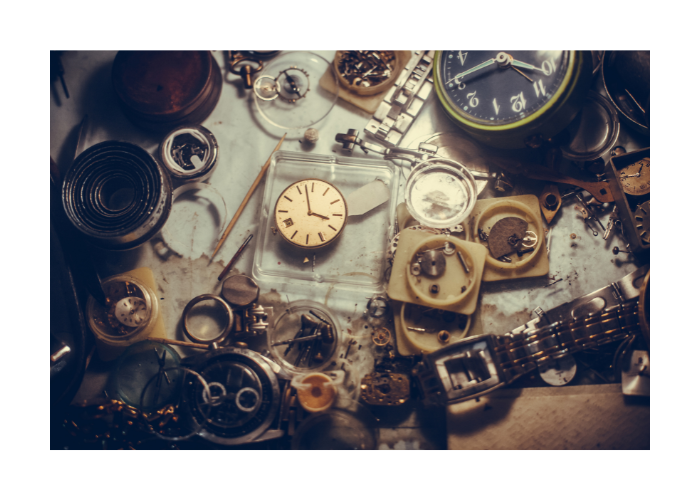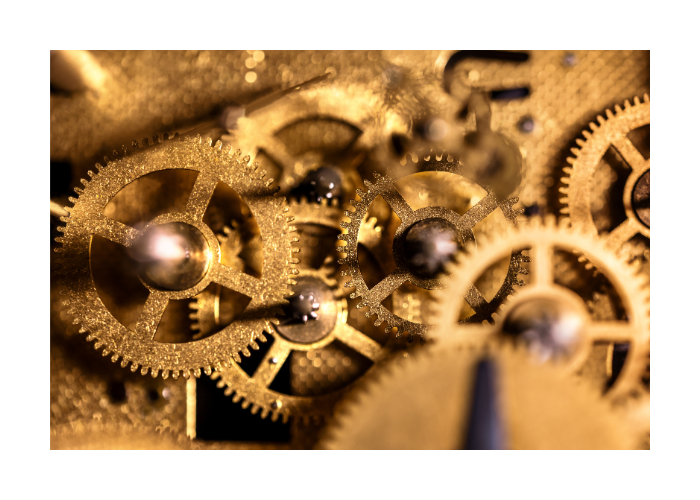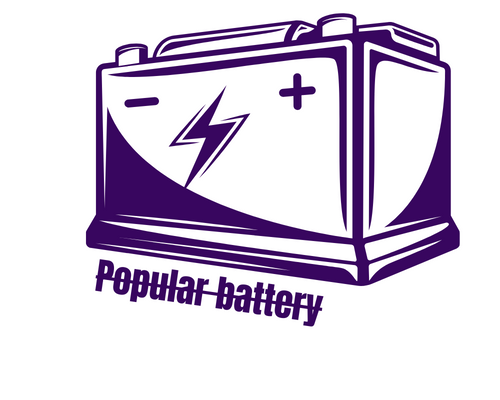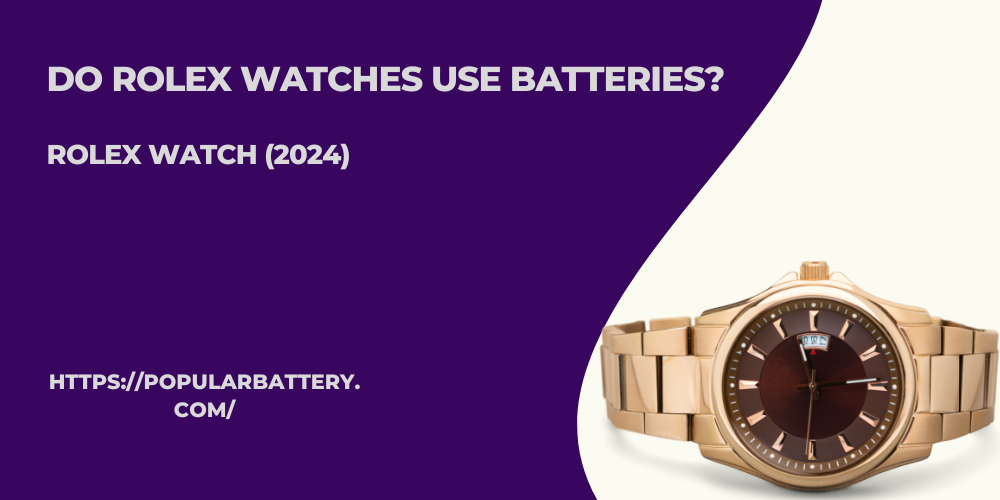Do Rolex watches use batteries? rolex watch (2024). Rolex watches are renowned for their precision, durability, and luxury status. They are primarily known for their mechanical watches, which do not require batteries to operate.
No, Rolex watches do not use batteries. They are powered by mechanical movements, either automatic (self-winding) or manual (hand-wound).
Instead, Rolex utilizes two main types of movements to power their watches: automatic (self-winding) and manual (hand-wound).
Do Rolex watches use batteries? rolex watch (2024).
The Essence of Rolex Precision.

- In-House Manufacturing and Rigorous Testing: Rolex designs and manufactures nearly all components of its watches internally, ensuring unparalleled quality control. From casting gold alloys in its own foundry to machining precision parts and assembling movements, Rolex’s integrated manufacturing process allows for meticulous oversight.
- Perpetual Movements: Central to Rolex’s precision are its self-winding Perpetual movements. With innovations like the Perpetual rotor, invented by Rolex in 1931, these movements ensure continuous operation by harnessing the motion of the wearer’s wrist to wind the mainspring. This mechanism keeps the watch functioning flawlessly without the need for manual winding, contributing to its accuracy over time.
- Superlative Chronometer Certification: Every Rolex watch is subjected to the Swiss Official Chronometer Testing Institute (COSC) tests, with standards that exceed official chronometry tests. After casing, Rolex conducts its own tests to award the Superlative Chronometer certification, which ensures a precision of -2/+2 seconds per day—far beyond the requirements of COSC. This certification reflects Rolex’s commitment to exceeding industry standards for accuracy.
- High-Quality Materials: Rolex uses only the finest materials to ensure the longevity and performance of its watches. This includes 904L stainless steel, which is more resistant to corrosion and damage; 18kt gold, created in the company’s own foundry to ensure a lasting shine; and sapphire crystals that are virtually scratchproof. Such materials not only contribute to the watch’s aesthetic appeal but also its functional precision over time.
- Continuous Innovation: Rolex’s dedication to precision is also evident in its continuous innovation. From developing new, more efficient lubricants to minimize friction within the movement, to introducing new alloys for its springs to enhance magnetic resistance, Rolex continually refines its watches.
The Heart of Rolex.
The heart of Rolex lies in its precision-engineered mechanical movements, epitomized by the self-winding Perpetual movement. These in-house crafted calibers, renowned for their reliability and accuracy, embody Rolex’s commitment to excellence, ensuring each watch is a masterpiece of durability and timeless elegance.
The Perpetual Movement.

- Invention and Evolution: Introduced in 1931, the Perpetual movement revolutionized watchmaking by introducing the self-winding mechanism. This innovation consists of a rotor that moves with the wearer’s wrist, automatically winding the watch’s mainspring to provide a constant and stable source of energy.
- Precision Engineering: Rolex Perpetual movements are meticulously designed and manufactured in-house, ensuring the highest standards of precision. Each component is crafted with exacting specifications to work flawlessly together, maintaining accurate timekeeping over long periods.
- Enhanced Durability: The Perpetual movement is built to last, with materials and construction techniques selected for their durability and resistance to environmental factors. Rolex’s commitment to using high-quality materials like 904L stainless steel and developing proprietary alloys ensures the movement’s longevity.
- Innovations for Accuracy: Rolex continuously improves its Perpetual movements with technological advancements, such as the Parachrom hairspring, which increases resistance to shocks and magnetic fields, enhancing the movement’s reliability and accuracy.
- Certification and Recognition: Each Rolex watch equipped with a Perpetual movement undergoes rigorous testing to earn the Superlative Chronometer certification. This guarantees a level of precision (-2/+2 seconds per day) that exceeds standard chronometer requirements, making the Perpetual movement a benchmark for excellence in the watchmaking industry.
Rolex Watches and Batteries.
Rolex watches are renowned for their mechanical movements, either self-winding (automatic) or manual, and do not rely on batteries for power. Their precision engineering embodies a tradition of self-sufficiency, with movements powered by the wearer’s movements or by hand winding, ensuring enduring performance without the need for battery replacements.
Care and Maintenance of Your Rolex.

- Regular Wearing: Keep your automatic Rolex functioning smoothly by wearing it regularly. The movement of your wrist winds the watch, keeping the mechanism active.
- Winding Your Watch: If you have a manual Rolex or an automatic that hasn’t been worn recently, wind it by turning the crown clockwise about 20-40 times or until you feel resistance.
- Cleaning: Clean your Rolex periodically with a soft, lint-free cloth. For a deeper clean, use lukewarm water and a mild soap, ensuring the winding crown is tightly screwed down to preserve water resistance.
- Avoiding Harsh Environments: Protect your watch from extreme temperatures, chemicals, and magnetic fields, which can affect its performance and appearance.
- Professional Servicing: Rolex recommends servicing your watch approximately every 10 years. Only authorized Rolex service centers should open your watch to guarantee the use of genuine Rolex parts and ensure water resistance and functionality are restored to factory standards.
Conclusion
Rolex watches do not utilize batteries. They are powered by sophisticated mechanical movements, either automatic or manual, that harness energy from the wearer’s movement or through manual winding. This hallmark of traditional watchmaking underscores Rolex’s dedication to precision, durability, and the art of luxury timekeeping without the need for battery replacements.
Faqs
Qno1: Do Rolex watches require a battery?
Ans: No, Rolex watches do not require a battery. They operate on mechanical movements, powered either by the wearer’s motion (automatic) or manual winding.
Qno2: Do Rolex watches stop running?
Ans: Rolex watches can stop running if not worn or wound regularly, as their automatic movements rely on wrist motion. Manual winding is necessary for prolonged inactivity.
Qno3: Is Rolex mechanical or automatic?
Ans: Rolex watches are both mechanical and automatic, with the majority featuring self-winding (automatic) movements powered by the wearer’s motion, alongside a selection of manual winding models.
Qno4: How to tell if a Rolex is real?
Ans: To determine if a Rolex is real, inspect its craftsmanship for precision, including flawless dial, smooth case finishing, and a weighty feel, and check for a serial number and model number engraved on it.
Qno5: How long does a Rolex last?
Ans: With proper care and maintenance, a Rolex can last a lifetime, often becoming a cherished heirloom passed down through generations.

